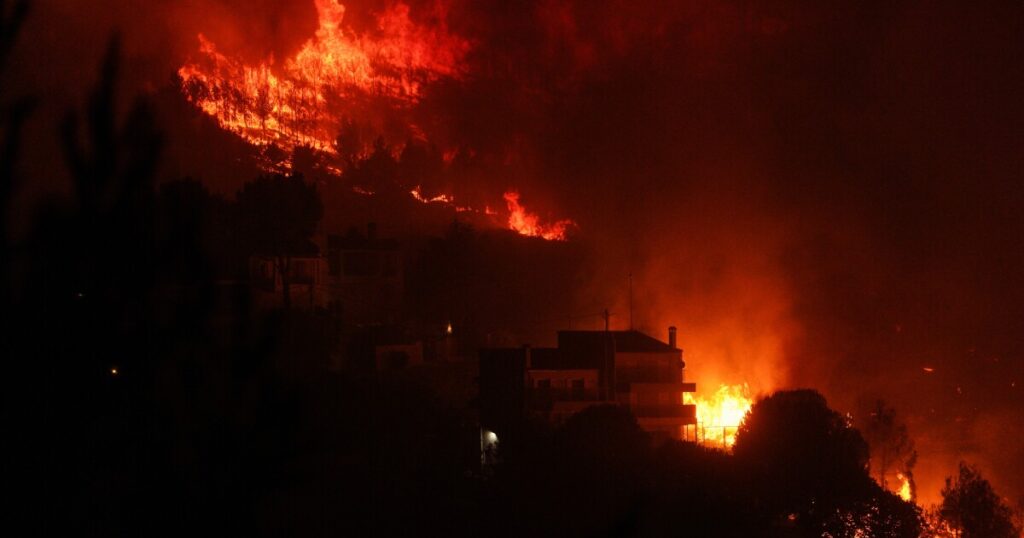Risks too big for insurers feed a $200B market boom

Enjoy complimentary access to top ideas and insights — selected by our editors.
(Bloomberg) –As the market for in-house insurance surpasses a record $200 billion, the underlying reasons for that boom show how a hotter, less stable planet is redrawing the risk map for corporations.
Captive insurance, where companies create their own coverage vehicles, is on the rise, according to insurance broker Aon Plc. Companies are using it to work around restrictions or to avoid prohibitively high prices imposed by external insurers. And it’s a development that’s particularly pronounced in sectors tied to climate change.
Oil and mining firms are now “using their captives to a greater degree,” John English, chief executive of captive and insurance management at Aon, said in an interview. That’s as coverage from outside insurers becomes “unaffordable or unappetizing from a price and capacity perspective.” In fact, a number of insurers and reinsurers have simply “turned away” from fossil-fuel firms, he said.
It’s the latest sign that climate change is upending the norms that underpin how markets function, as the economic cost of covering its fallout balloons. A recent report by Aon noted that the market for captive insurance has grown “significantly” over the past few years, with roughly a quarter of the almost 3,000 companies it surveyed saying they’ve resorted to such arrangements. In 2021, the figure was 17%.
“Climate change is having an amplifying effect on all the risks we know,” said Peter Carter, head of climate and captives at broker WTW. And captives are “playing a role as a shock absorber,” he said.
Read More: Natural Disasters to Cause $151 Billion in Annual Insurer Losses
How Does Captive Insurance Work:A captive arrangement typically functions as a special-purpose vehicle that’s created to insure, or reinsure, the risk of the parent company that’s setting it up. Companies transfer premiums to their own insurance SPVs. The construction can sometimes be used to split coverage with external insurers, or make use of alternative-risk transfer solutions like parametrics.Captives offer tax benefits, and companies using them can reinvest surplus cash from their premiums. Captive insurance is used to cover a range of risks, spanning environmental to the threat of cyberattacks. Data on captives doesn’t capture the full extent to which companies are doing insurance in-house. That’s because a company can also opt for self-insurance, where it sets money aside to cover future losses without creating a regulated SPV. The global market for captive insurance surpassed $200 billion in premiums last year, marking an all-time record, according to data shared by WTW.
That’s as extreme weather pushes mainstream insurers from the US to Europe to raise prices to levels that make their services increasingly inaccessible. Sectors affected by the development span utilities to operators of renewable-energy farms.
“We’re seeing lots of firsts in weather,” said Anna Pereira, senior vice president at Strategic Risk Solutions, a captive-insurance specialist and the former head of captive and insurance banking at the Bermuda office of HSBC Holdings Plc.
“Some large insurance companies in the US are not writing certain types of business or within certain geographies that are highly exposed, and pricing has increased significantly,” she said.
At the same time, a growing number of insurers and reinsurers are turning down fossil-fuel companies, as they seek to comply with climate policies and the transition to cleaner energy. Globally, 46 insurers now have some form of restriction on coal, oil or gas companies, according to Insure Our Future, a coalition of nonprofits.
BHP Group Ltd., TotalEnergies SE, Enel SpA, BP Plc, Glencore Plc and Shell Plc have all created in-house entities to cover their risk, according to company filings. Other commodity companies now relying on the captives market include Thungela Resources Ltd., the spinoff from Anglo American Plc. Australian coal producer Whitehaven Coal Ltd. has said it’s in the process of setting one up.
In some cases, government-funded programs are stepping in as commercial insurers retreat. North Dakota, meanwhile, is recommending that companies turn to captives. In the state, which is home to 10% of American crude oil reserves and one of the world’s largest lignite coal deposits, the few insurers still willing to cover pure-play coal companies are raising rates and limiting policy renewals, according to an analysis by Bank of North Dakota.
The rise of captives may be bad news for the climate, according to Ariel Le Bourdonnec, insurance campaigner at nonprofit Reclaim Finance.
Captives are a “shadow part of the insurance industry” that enables the continued underwriting of polluting assets, he said. Ultimately, the development could delay the green-energy transition, he said.
And companies doing their own insurance may underestimate the risks they face. The most notable example in recent history is BP, which in 2010 relied on its captive-insurance vehicle, Jupiter Insurance Ltd., to cover the Deepwater Horizon oil rig. When that rig exploded and sank, killing 11 people and causing the biggest offshore oil spill in US history, BP’s captive insurance arrangement was limited to $700 million, and no reinsurance arrangement existed. BP is still counting the cost, which has since soared into the tens of billions of dollars.
“If there isn’t an alternative, when things go horribly wrong the insurer of last resort often ends up being private individuals or the government,” says Carter at WTW. In the long run, captives can help ensure there’s a “fair balance” between who ends up “bailing out failure in the capital system,” he said.
Aon’s English said there’s a risk of captives prolonging the life of high-emitting assets “if one does it blindly.” But such arrangements also help to give companies time to adapt to a changing regulatory environment, he said.
“There’s a period of time that one needs to phase this stuff out,” English said. The question then becomes, “what does that phasing look like?”







